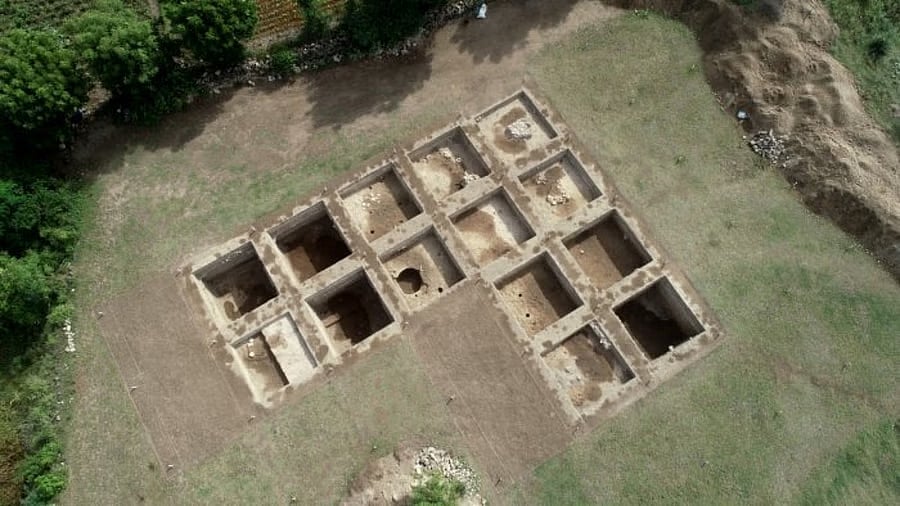
The Keeladi site.
Credit: TNSDA
Chennai: Keeladi, the Sangam-era archaeological site near Madurai, which has been scientifically proven to be 2,600 years old, is back in focus yet again after the Archaeological Survey of India (ASI) asked K Amarnath Ramakrishna, the site’s excavator, to “resubmit” his report after making necessary corrections suggested by two experts who vetted the document.
In his response sent on May 23, 2025, Ramakrishna, who is now Director (Antiquities), stoutly defended his 982-page report submitted to the ASI on January 30, 2023, stating that the chronological sequence of Keeladi has been clearly explained in the voluminous report.
It is reliably learnt that Ramakrishna has stopped short of making it clear that he will not rework the report and has informed the ASI that the agency has already accepted the nomenclature of the changes in the period.
Ramakrishna told Hemasagar A Naik, Director (EE), ASI, who sent him a letter on May 21, 2025, seeking changes as suggested by the experts, that the period of the site was reconstructed as per the stratigraphical sequence, cultural deposits available with material culture, and with AMS dating found during the excavation.
“Based on the findings and facts, the final outcome of the excavator’s observations was incorporated in the final report with all documentary evidence, and the chronological sequence of the Keeladi site was clearly explained in the report,” Ramakrishna is believed to have told Naik.
The ASI’s decision to ask Ramakrishna, who worked on the document for over a year, to rework the report has triggered a massive controversy in Tamil Nadu, with political parties alleging that the BJP-led Union Government was behind the move. They also said the BJP does not want the findings to come out in the public domain and is deploying such tactics to delay the release of the report as long as it can.
Artefacts unearthed from Keeladi, 12 km southeast of Madurai, have been dated to 585 BCE, pushing the literature-rich Sangam Era back by 300 years from what was earlier thought.
Naik, in his letter, told Ramakrishna that two experts who vetted the report have suggested corrections in the draft to make it “more authentic,” stressing that the three periods mentioned by the excavator require proper nomenclature or re-orientation, and that the time bracket of 8th century BCE to 5th century BCE requires “concrete justification.”
Ramakrishna told Naik that the period of the Keeladi excavation has been evaluated according to established archaeological excavation procedures. He said layer numbering will be done if it is found missing, and informed that all relevant maps, plates, and drawings have been provided in high-resolution format in both soft and hard copies to the ASI headquarters at the time of submission of the report.
“Hence, there is no chance of anything being missing; however, if anything is found missing, it will be corrected,” Ramakrishna is believed to have written to Naik.
Ramakrishna’s tenure as the officer in charge of Keeladi was mired in controversy after he was abruptly transferred to Assam in 2017, and his successor claimed that there were no “significant findings” in the third phase.
However, the Madurai Bench of the Madras High Court intervened and asked the Tamil Nadu State Department of Archaeology (TNSDA) to take over the excavations, which will enter the 11th phase this June.
About 20,000 artefacts have been recovered from Keeladi since 2014.
DH had reported on February 3, 2023, that the voluminous report, which contains detailed photographs and diagrams of the trenches, has 12 chapters that explain the historical background and objective of the excavation, besides delving into the structural remains, pottery, graffiti sherds, and terracotta objects that were found between 2014 and 2016.